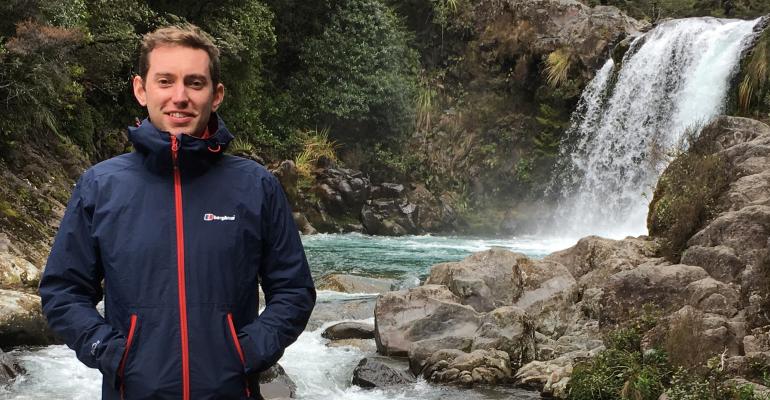- AUTHORFirst year anniversary for climate modeller
- November 28 2016
First year anniversary for climate modeller

It’s been a year since climate scientist Dr Jonny Williams ventured to New Zealand to join the Deep South Challenge as part of the Earth System Modelling & Prediction team. We asked him about his work, his background and his first year in New Zealand.
I’m climate scientist – my role, which is funded by the Deep South Challenge and hosted at the National Institute of Water and Atmosphere (NIWA) is to develop and document the New Zealand Earth System Model or NZESM. I also support other users of the model and act as a liaison between New Zealand and the international members of our modelling consortium, which includes the weather and climate agencies of the UK, Australia, South Korea and South Africa.
I come from England, originally, and after my PhD studies in solar energy conversion at Bath University, I worked at the Met Office in Exeter (the UK equivalent of the weather and climate work of New Zealand’s MetService and NIWA) as part of the climate model development team. After this I worked for an environmental consultancy firm in Bristol where I worked on everything from carbon footprint analysis, the effects of marine planning law on birds and tourism to the environmental impacts of landfill and product reuse. After this I moved to Bristol University where I spent five years working on paleo-climate simulations of the extreme warm climates of the Jurassic and Cretaceous periods using climate models; when dinosaurs ruled the Earth!
The role with the Deep South Challenge appealed in many ways. Simply the ability to experience life in New Zealand was a factor due to the incredible beauty and natural spectacle of the country but two other factors outweighed this. The first one was the knowledge that I would be working in small teams compared to many of those that I was used to. This presents challenges, for sure, but it also provides opportunities to ‘muck in’ and be involved with a much more varied day-to-day workflow. The second was the opportunity to work in an oceanic region which, geographically speaking, has a huge influence on global climate but which is relatively poorly understood compared to, say, the North Atlantic. The Southern Ocean, which is one of our main focal areas, presents huge challenges for climate scientists due to the difficulty in taking measurements in such a vast, unforgiving area of open ocean. However, the opportunity to work with a group of modellers, observationalists and Antarctic explorers was too good to pass up.
I have been fortunate in my time at NIWA, that I have travelled from my base in Wellington to Auckland and Queenstown in order to present at conferences and to Melbourne to meet new collaborators at the Australian Bureau of Meteorology. I have also engaged with new colleagues at GNS and the MetService and will be doing so, for example, at the Hawke’s Bay Regional Council in the coming few months to discuss future effects of climate change and weather extremes on a local level. I’m enjoying working in a greater variety of professional situations compared to my previous roles; although I am primarily employed to develop the NZESM, I am able to engage to communities outside of my academic ‘comfort zone’. This can be challenging but it makes for a varied and interesting role in the Deep South Challenge.